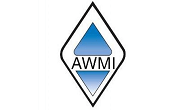
Final Thoughts
Sheet prices mostly ticked higher again this week. And the reasons shouldn’t come as a big surprise to anyone who has been reading SMU lately.

Sheet prices mostly ticked higher again this week. And the reasons shouldn’t come as a big surprise to anyone who has been reading SMU lately.

Canadian steelmaker Algoma's plans to bring forward the scheduled full transition to electric-arc furnace (EAF) steel production by one year merits a revisit. Why? Because of its potential impact on ferrous scrap flows between the US and Canada.

There was a palpable sense of optimism among folks at the HARDI conference about demand from data centers. In other words, around the physical infrastructure – which also includes energy transmission - needed to feed the AI boom. The big question: Could demand from data and AI be far stronger than the market yet realizes?

Let's take a look inside the last SMU Scrap Survey of 2025.

During the summer of 1989, I made a journey in search of recoverable scrap metal to a place I only studied in history books and in military training.

It's important to keep in mind - maybe especially for those of us in the US - that the rest of the world can act too. And I think we're already seeing signs of that action, or at least that's been my takeaway from some of SMU's recent reporting and from Community Chat webinars for both SMU and AMU.

The price hike parade that got underway in earnest in November looks set to continue in December. And it's been joined by, well, just about everybody.

You might be looking forward to some Black Friday deals. But I wouldn't expect many, at least when it comes to flat-rolled steel.

Recollections of better days in Ukraine.

We’ve been writing a lot about steel prices lately and what might happen with President Trump’s trade and tariff policy. I’d like to take a little break from that today. Instead, I'll focus instead on something I always find exciting and inspiring – namely, new mills.

Sheet prices are in the middle of one of their most sustained rallies since the first quarter, and this time in the absence of any tariff or trade policy shocks.

Rising prices and stable demand is not a bad way to slide into the ending of 2025.
Scrap keeps on trucking, shutdown or not.

Anyone standing near the Sheraton Grand at Wild Horse Pass in Phoenix, Az undoubtedly felt a kinetic charge this week. Professionals from coast-to-coast convened in the posh desert oasis for the Association of Women in the Metals Industry (AMWI) 2025 conference. Amidst the metals crowd were those leading teams and organizations through the heat of the 2025 moment.
Nippon Steel is making good on the big capex promises it made to secure its purchase of United States Steel Corp. This week, the Japanese company and American steelmaker together unveiled various capital investments they plan to make across U.S. Steel’s footprint.

Could 2026 be the year when tariffs headwinds clear?

Most steel buyers think that steel prices will continue to rise into the 2026. But they don’t see the kinds of big gains that have characterized past market upturns, according to the results of SMU’s latest steel market survey.

Sometimes an entire news cycle happens in one week.

SMU’s hot-rolled coil price increased for a third consecutive week. And the gains were more pronounced this time following a price hike initiated on Friday by NLMK USA.

SMU digs into the vault to look back at an old survey, and to tell what exciting things are still to come.

Below are some other issues that should be on your radar. Because while prices have been steady, a lot is going on when it comes to news that could impact them.

It's can-kicking at its finest. And it’s been drawn out! Some are getting so good at it, they’re kicking cans and taking names.
The US scrap market finds itself in a familiar position as we progress into the final quarter of the year.

Musings on decarb, tariffs, and technology, and where it might be leading.

There are days when this feels like a “nothing ever happens” market. Don’t get me wrong. Plenty is happening in the world. It’s just that none of it seems to matter when it comes to sheet and plate prices.

Usually, I write about steel in this column because, well, we’re Steel Market Update. But before I get to steel, I want to give a shoutout to my colleagues at Aluminum Market Update (AMU) – SMU’s new sister publication.

SMU’s latest survey results indicate that steel market participants think sheet prices are at or near a bottom. But most also think there is limited upside once they inflect higher.

A recent IIMA meeting in Brazil shows how the US and much of the rest of the world are operating in parallel realities.

We moved our pricing momentum indicators from “lower” to “neutral” for all sheet products this week. For those keeping score, we had been at “lower” for six weeks. And I know some of you think we should have been there for even longer.

Renowned Nucor Chairman and CEO Ken Iverson would’ve turned 100 on Sept. 18 of this year.